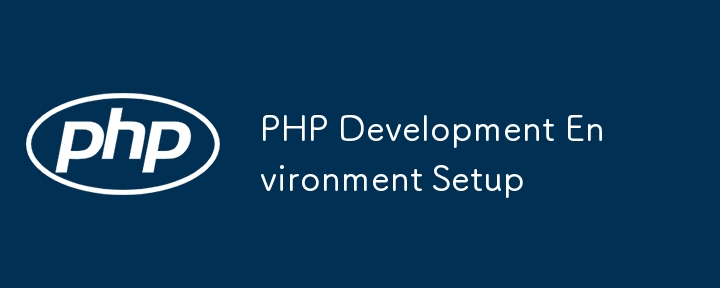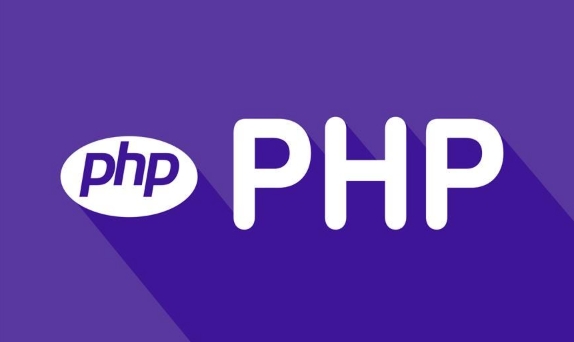PHP Development Environment Setup
The first step is to select the integrated environment package XAMPP or MAMP to build a local server; the second step is to select the appropriate PHP version according to the project needs and configure multiple version switching; the third step is to select VS Code or PhpStorm as the editor and debug with Xdebug; in addition, you need to install Composer, PHP_CodeSniffer, PHPUnit and other tools to assist in development.

If you want to start writing PHP programs, the first step is to build the development environment. Many people will get stuck at this step at the beginning. In fact, as long as you choose the right tools and clarify the process, the environment is not complicated.

How to choose a local server: XAMPP or MAMP?
For those who are just getting started, the easiest way is to use integrated environment packages, such as XAMPP or MAMP. They all come with Apache, MySQL and PHP. After installation, they can run PHP projects by directly starting the service.
- XAMPP is cross-platform, supports Windows, macOS and Linux, and is more flexible to configure.
- MAMP is more suitable for macOS users, with a friendly interface, and is suitable for those who don’t want to mess with configurations.
Pay attention to when using:

- Make sure that ports 80 and 3306 are not occupied by other programs before starting
- Remember to back up the original file when modifying php.ini
- The default website directory is usually a subdirectory under
htdocsorhtdocs
How to choose the PHP version? Don't always follow the latest version
PHP updates quickly, but not every project requires the latest version. If you are taking on other people's projects, it is best to confirm which PHP version they are using first.
- Common stable versions are 7.4, 8.0, 8.1, and most modern frameworks (such as Laravel) are already compatible with these versions.
- Some old projects may also rely on PHP 5.6 or 7.2, so be careful not to upgrade too hard.
- Use phpbrew or [XAMPP Multi-version Switching Plug-in] to easily switch between multiple PHP versions
The method to view the current version is very simple, enter it on the command line:

php -v
Recommended editor and debugging tools are enough
In terms of editors, VS Code and PhpStorm are the mainstream choices. VS Code is free, and can also implement code prompts, syntax checking and other functions with PHP plug-in; PhpStorm has more comprehensive functions and is suitable for medium and large projects.
The debugging tool is recommended to be used with Xdebug, which can help you see variable values, execution paths, error stacks and other information. Note when setting:
- To enable xdebug extension in php.ini
- Configure remote_enable=On to trigger debugging in the browser
- VS Code Install PHP Debug plug-in for graphical debugging
Some practical gadgets:
- Composer: PHP package manager, which almost all modern frameworks rely on
- PHP_CodeSniffer: Check whether the code style complies with the specifications
- PHPUnit: Must-have for unit testing
Basically that's it. Don't be scared by a bunch of configurations. Take it step by step, first run the basic environment, and then slowly add functions. Many problems are actually caused by the path configuration or extension not being opened. If you encounter problems, read more logs to solve the problem faster than Baidu.
The above is the detailed content of PHP Development Environment Setup. For more information, please follow other related articles on the PHP Chinese website!

Hot AI Tools

Undress AI Tool
Undress images for free

Undresser.AI Undress
AI-powered app for creating realistic nude photos

AI Clothes Remover
Online AI tool for removing clothes from photos.

Clothoff.io
AI clothes remover

Video Face Swap
Swap faces in any video effortlessly with our completely free AI face swap tool!

Hot Article

Hot Tools

Notepad++7.3.1
Easy-to-use and free code editor

SublimeText3 Chinese version
Chinese version, very easy to use

Zend Studio 13.0.1
Powerful PHP integrated development environment

Dreamweaver CS6
Visual web development tools

SublimeText3 Mac version
God-level code editing software (SublimeText3)

Hot Topics
 Commenting Out Code in PHP
Jul 18, 2025 am 04:57 AM
Commenting Out Code in PHP
Jul 18, 2025 am 04:57 AM
There are three common methods for PHP comment code: 1. Use // or # to block one line of code, and it is recommended to use //; 2. Use /.../ to wrap code blocks with multiple lines, which cannot be nested but can be crossed; 3. Combination skills comments such as using /if(){}/ to control logic blocks, or to improve efficiency with editor shortcut keys, you should pay attention to closing symbols and avoid nesting when using them.
 Tips for Writing PHP Comments
Jul 18, 2025 am 04:51 AM
Tips for Writing PHP Comments
Jul 18, 2025 am 04:51 AM
The key to writing PHP comments is to clarify the purpose and specifications. Comments should explain "why" rather than "what was done", avoiding redundancy or too simplicity. 1. Use a unified format, such as docblock (/*/) for class and method descriptions to improve readability and tool compatibility; 2. Emphasize the reasons behind the logic, such as why JS jumps need to be output manually; 3. Add an overview description before complex code, describe the process in steps, and help understand the overall idea; 4. Use TODO and FIXME rationally to mark to-do items and problems to facilitate subsequent tracking and collaboration. Good annotations can reduce communication costs and improve code maintenance efficiency.
 Improving Readability with Comments
Jul 18, 2025 am 04:46 AM
Improving Readability with Comments
Jul 18, 2025 am 04:46 AM
The key to writing good comments is to explain "why" rather than just "what was done" to improve the readability of the code. 1. Comments should explain logical reasons, such as considerations behind value selection or processing; 2. Use paragraph annotations for complex logic to summarize the overall idea of functions or algorithms; 3. Regularly maintain comments to ensure consistency with the code, avoid misleading, and delete outdated content if necessary; 4. Synchronously check comments when reviewing the code, and record public logic through documents to reduce the burden of code comments.
 Writing Effective PHP Comments
Jul 18, 2025 am 04:44 AM
Writing Effective PHP Comments
Jul 18, 2025 am 04:44 AM
Comments cannot be careless because they want to explain the reasons for the existence of the code rather than the functions, such as compatibility with old interfaces or third-party restrictions, otherwise people who read the code can only rely on guessing. The areas that must be commented include complex conditional judgments, special error handling logic, and temporary bypass restrictions. A more practical way to write comments is to select single-line comments or block comments based on the scene. Use document block comments to explain parameters and return values at the beginning of functions, classes, and files, and keep comments updated. For complex logic, you can add a line to the previous one to summarize the overall intention. At the same time, do not use comments to seal code, but use version control tools.
 Learning PHP: A Beginner's Guide
Jul 18, 2025 am 04:54 AM
Learning PHP: A Beginner's Guide
Jul 18, 2025 am 04:54 AM
TolearnPHPeffectively,startbysettingupalocalserverenvironmentusingtoolslikeXAMPPandacodeeditorlikeVSCode.1)InstallXAMPPforApache,MySQL,andPHP.2)Useacodeeditorforsyntaxsupport.3)TestyoursetupwithasimplePHPfile.Next,learnPHPbasicsincludingvariables,ech
 Quick PHP Installation Tutorial
Jul 18, 2025 am 04:52 AM
Quick PHP Installation Tutorial
Jul 18, 2025 am 04:52 AM
ToinstallPHPquickly,useXAMPPonWindowsorHomebrewonmacOS.1.OnWindows,downloadandinstallXAMPP,selectcomponents,startApache,andplacefilesinhtdocs.2.Alternatively,manuallyinstallPHPfromphp.netandsetupaserverlikeApache.3.OnmacOS,installHomebrew,thenrun'bre
 PHP Commenting Syntax
Jul 18, 2025 am 04:56 AM
PHP Commenting Syntax
Jul 18, 2025 am 04:56 AM
There are three common ways to use PHP comments: single-line comments are suitable for briefly explaining code logic, such as // or # for the explanation of the current line; multi-line comments /*...*/ are suitable for detailed description of the functions or classes; document comments DocBlock start with /** to provide prompt information for the IDE. When using it, you should avoid nonsense, keep updating synchronously, and do not use comments to block codes for a long time.
 PHP Development Environment Setup
Jul 18, 2025 am 04:55 AM
PHP Development Environment Setup
Jul 18, 2025 am 04:55 AM
The first step is to select the integrated environment package XAMPP or MAMP to build a local server; the second step is to select the appropriate PHP version according to the project needs and configure multiple version switching; the third step is to select VSCode or PhpStorm as the editor and debug with Xdebug; in addition, you need to install Composer, PHP_CodeSniffer, PHPUnit and other tools to assist in development.







